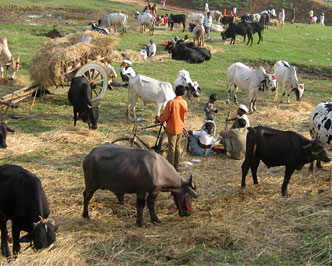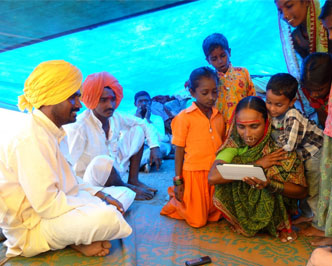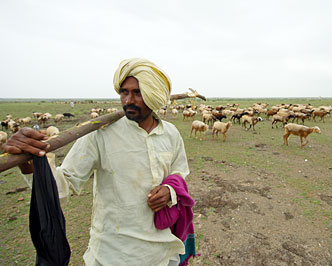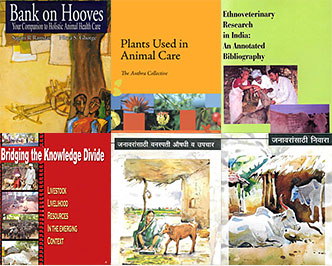-
- November 26, 2024
TOWARDS GENDER EQUITY in AGRICULTURE: PERSISTING CONCERNS and CHALLENGES
Fifty years ago, the United Nations Commission on the Status of Women called for the organisation of the first World Conference on Women which was held in Mexico City in 1975, coinciding with the first International Year for Women. The global plan for action set in Mexico City was taken forward at every subsequent Conference on Women: Copenhagen (1980), Nairobi (1985) and notably Beijing (1995) when the Declaration and Platform for Action was adopted, consolidating decades of political and legal advances on the status of women across the world. Yet, thirty years on, globally and in India concerns and challenges remain in forging a way forward. This brief Note focuses on women engaged in farming and allied sectors.
Concerns
In the early 20th Century, Indian women’s struggles for equality were subsumed by the movement for freedom from colonial rule. Independence brought significant rights enshrined in the Indian Constitution, including enfranchisement for all adult women. Yet, the democratic right to vote was no magic wand to alter the condition and position of women (and particularly of poor women) in India, which had scarcely even been documented. It was in the run-up to the first UN Conference on Women that the Indian Council for Social Science Research initiated work on this documentation. Towards Equality: Report of the Committee on the Status of Women in India (ICSSR: 1974) was ground-breaking. It provided a fresh impetus to the women’s movement in India and stirred the attention of policy makers. Yet, even Towards Equality did not focus much on poor rural women’s lives, their natural resource-based livelihoods and their needs for fuel and fodder.
On a much smaller scale, however, the Indian Council for Agricultural Research (ICAR), did collate reports and studies on women farmers. To mark the International Year for Women, 1975, it brought out a special issue of its journal Indian Farming (ICAR: 1975) that included farming, forests, livestock, fisheries and rural, tribal and hill women’s struggles for natural resources. A small study I did for that issue showed how swiftly farming women in a Haryana village were being marginalised by ‘Green Revolution’ technology (Sridharan, Sumi 1975). It was already apparent then that farming women’s autonomy and decision-making roles were being impacted by a cluster of factors: the increased burden of work and time pressures; lack of ownership of resources and land; problems with funds whether from moneylenders or banking services; poor access to information and agricultural and livestock extension workers; and cultural constraints in irrigating fields, commuting to markets and so on.
Fifty years since, despite some positive developments, the concerns that emerged from the introduction of ‘Green Revolution’ technology continue, aggravated by new forces unleashed by a globalised and liberalised economy. While the feminisation of agriculture has been widely discussed, it is the ‘feminisation of agrarian distress’ that has become a critical concern (Pattanaik et. al. 2017).
For poor rural women, their labouring bodies are their only asset. Violence is a part of their lives but it is not the whole of it. Violence is emmeshed with the women’s poverty, their family situation and their social and geographic location. Structural violence is one more thing that poor farming women have to cope with in the complexity of their day-to-day existence.
Challenges
There are multiple challenges in tackling the gendered and often violent impact of agrarian distress.
- Normative challenges.
We have to address normative issues at the outset. These include:
- The need to recognise women as farmers and farm workers in their own right, unlike many government policies and programmes that focus on women instrumentally within particular programmatic areas to meet specific ends.
- The need to acknowledge that farming knowledge is rooted in the customary division of gender roles and work, without viewing women essentially as natural, inherent repositories of knowledge.
- The need to approach action and interventions from the perspective of women’s well-being and autonomy, and not only conventionally in terms of their labour in maintaining conservation landscapes and ecological sustainability.
- The challenge of assessing women-specific terminology and interventions.
Policies and programmes that seem to favour women by using the correct terminology are often a smokescreen and the challenge is to continuously evaluate these interventions.
- In the decades after the Beijing Declaration in 1995, the term ‘gender’ has been widely adopted without understanding the politics of gender and the structural problems of inequity in society. Today, ‘gender’ is often used simply as a synonym for ‘women’; gender relations are not understood, men are not addressed. Such usage masks discrimination.
- Many livelihood interventions are projected as gendered but only reinforce the customary gendered divisions of labour. These do not counter women’s exclusion from decisions on the productive use of public resources such as water, for instance (Krishna and Kulkarni 2019).
- Gender budgeting has been recognised as a useful economic tool for policy but government departments tend to mechanically aggregate various ‘welfare’ schemes without evolving strategies for gender outcomes, and treat household benefits only as women’s benefits.
- The challenge of examining the gender impact of wider policies.
A cross-section of policies across several sectors have gendered impacts. Uncovering the impact of wider policies in aggravating the ‘feminisation of agrarian distress’ is a particularly difficult challenge.
- Forests: The Forest Conservation Amendment Act 2023 redefines forests, erodes the Forest Rights Act, 2006, and facilitates the diversion of forest land for various other purposes. The women of tribal and traditional forest-dwelling communities bear the brunt of this erosion of their rights to forest land and resources.
- Pastoralism: The appropriation of rangelands and Common Property Resources, denies the rights of nomadic, non-settled communities. (It is only after prolonged civil-society pressure that, for the first time in 100 years, the on-going 21st Livestock Census of India 2024 has included pastoral herds and also a question on the gender of the person who spends more time in livestock-care.)
- Livestock: Artificial Insemination of Hybrid and Sex Sorted Semen2 for female offspring in cattle and buffalo undermines indigenous breeds, and small livestock herders. This raises many ethical and livelihood concerns that have not figured in the public discourse.
- Natural farming: The declared official thrust for natural farming by the Government of India is belied by the paltry financial outlay (0.1% of the subsidy for chemical fertilisers), reflecting entirely different priorities. Natural farming initiatives (like many other conservation measures) tend to have an instrumental focus on women, increasing their labour without denting the patriarchal structures within which they live and function.
- The challenge of breaking the hierarchy of knowledge systems.
The hierarchy of knowledge systems is perhaps the most contentious issue because it involves opening up disciplinary boundaries and questioning conventional assumptions about expert, specialised knowledge. The first steps would be to rethink various aspects of documentation and research methodology. For instance, there is need to:
- Enable farming women to voice and record their own concerns themselves, through oral testimonies, using their own tools or emerging tools such as the mobile phone.
- Document innovative ‘side-stream’ (i.e. non-mainstream), community or NGO-facilitated interventions over the long-term (Krishna 2012). Generally, ‘success stories’ are documented only at moments of achievement, overlooking the years of struggle and perhaps failure that went into the making of the success.
- Continuously revisit research methodology (that is the approaches, methods and tools): Gender Analysis is a valuable tool but mechanically applying existing ‘frameworks’ designed for Western societies does not work for the complex, diverse settings acrossIndia.
- Promote context-specific approaches. There are many examples3 of such innovative attempts by researchers/practitioners to address, for instance, the problems of dryland and other farming systems, soils, pastoralism, livestock-care etc. from a grounded, gendered perspective.
Moving forward to ensure gender equity
Concerns over the ‘feminisation of agrarian distress’ and the multiple challenges that impinge on farming women cannot be addressed without sustained attention from activists, practitioners and researchers, on the one hand, and from administrators and policy-makers, on the other. Working together is necessary to create the synergy to move forward.
Yet, doing ‘gender’ in the field cannot be separated from internalising gender by individuals and within organisations and institutions. Being sensitive to gender issues and insensitive say to caste discrimination cannot be the way forward. Equity cannot be ensured unless the focus shifts from gender to the intersection and aggregation of discriminations, gender with tribe/caste-class etc.
The lives of women farmers and farm labourers are complex. Public attention is drawn by physical acts of violence that women are subjected to, acts of violence that are categorised as crimes under Indian laws. But the systemic violence that is embedded in the structure of rural society is manifested day-in and day-out, every day. Violence against women must not be viewed as a single aberrant act but as a layered continuum through the socio-economic fabric of society, exasperating agrarian distress.
Thirty years on from the stirring Beijing Declaration, we need to reaffirm and redefine our goals and collectively seek strategies for action towards gender equity, sustainable development and peace.
Notes
A part of this Note was presented by Sumi Krishna at a panel organised by Makaam at the IRMA-NRAS Conference ‘Managing Sustainable Transitions in Agriculture: Newer Directions in Research and Civic Action’. Anand: November 2023.
- Gender equality seeks balance, gender equity seeks justice for all groups. Women are not a homogenous group. Gender discrimination intersects with caste/tribe and class, location, sexual orientation, age etc.
- Ministry of Fisheries, Animal Husbandry and Dairying Year End Review 2022 (PIB 28 Dec) states: ‘Accelerated Breed Improvement Programme using sex sorted semen is implemented to produce female calves with 90% accuracy. Farmers taking Al with sex sorted semen are incentivized @ Rs 750 per pregnancy and balance amount will be met by the farmer taking up pregnancy through sex sorted semen. So far, 27.86 lakh doses of sex sorted semen has been produced at Government semen stations assisted under Rashtriya Gokul Mission and 31.12 lakh doses from Milk Federation, NGO and private semen stations.’
- For instance: Bhavana Rao Kuchimanchi’s (2022) work on agricultural transitions in drylands integrates gender outcomes in varied smallholder farming systems. Agricultural scientist and administrator Meghana Kelkar (2017) methodically and innovatively unpacked the gender aspects of soil, a technical subject. The NGO Anthra (2023, Ghotge and Krishna 2023) is working on understanding the much-neglected field of gender and livestock for the sustainable development of marginalised livestock and pastoral systems. Presently, the NGO Soppecom with the network Mahila Kisan Adhikar Manch (Makaam) is engaged in an ongoing study of structural violence against women in agricultural settings.
References
Anthra 2023. ‘Gender and Livestock. Summary Report of the Workshop’ prepared by Ovee Thorat et.al. Pune: March.
Ghotge, Nitya S. and Sumi Krishna. 2023. ‘Confronting Gender Issues in Veterinary Science and Practice.’ Presentation. Thiruvanthapuram: National Conference of the Indian Association for Women’s Studies.
Kelkar, Meghana. 2017. ‘Journeying through an “Alien Terrain”: Feminist Research Methodology and Local Knowledge of Soil Management’ in Sumi Krishna and Gita Chaddha Eds. Feminists and Science: Critiques and Changing Perspectives in India. Vol.2. New Delhi: Sage – Stree.
Krishna, Sumi 2012. ‘Gender and Sustainable Livelihoods in India: ‘Side-Stream’/’Mainstream’ in Wendy Harcourt Ed. Women Reclaiming Sustainable Livelihoods: Spaces Lost, Spaces Gained. London: Palgrave-Macmillan.
Krishna, Sumi and Seema Kulkarni 2019. ‘Why we need alternatives to alternative discourses’ in K. J. Joy and S. Janakarajan Eds. India’s Water Futures: Emergent Ideas and Pathways. New Delhi: Routledge
Pattanaik, Ittishri, K Lahiri-Dutt, S. Locke and B. Pritchard 2017. ‘The feminization of agriculture or the feminization of agrarian distress: Tracking the trajectory of women in agriculture in India’. Journal of the Asia Pacific Economy. 23(1) 138-155.
Rao Kuchimanchi, Bhavana 2022. Exploring agricultural transitions in drylands: A study of smallholder farming systems development in Telangana, India. Published PhD thesis. Wageningen Institute of Animal Sciences.
Sridharan, Sumi 1975. ‘In Chhatera – Maya, Bhim Kaur and Chalthi’. Indian Farming: Nov. (Special Issue: Women in Indian Farming). New Delhi: Indian Council for Agricultural Research.

- About Us
- Focus Areas
- Projects

- Overview
Active Projects
- Gender and Livestock in India: Toolkit for Evolving Research Strategies
- Livestock in Agroecology: an action research project to document and share different ways livestock contribute to promote agroecology
- IndiaZooRisk+: Using OneHealth approaches to understand and co-develop interventions for zoonotic diseases affecting forest communities in India
- Bringing Visibility and Recognition to Women Livestock Farmers and Pastoralists & Their Knowledge
Completed Projects
- Mapping Rangelands and Pastoral Landscapes
- Livestock Products and Livestock Markets in Dryland Areas of India: Emerging Changes and Challenges
- Mobile And Solar
- Maternal And Child Health In Mobile Pastoral Communities: Invisible And Unaccounted For
- Reduction Of Antibiotic Use In Dairy Farming
- Milk Produced Under Different Systems In India
- Enabling access to ‘good food’ through a rural-urban exchange
- Partnering through Knowledge Sharing: Helping Small Livestock holding Communities emerge from the Shadows
- School Under a Thousand Stars
- Publications
- Blog



